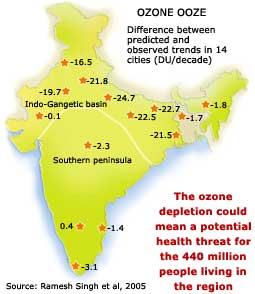/sub-categories/news-and-articles
News and Articles
Campaigns aimed at battling climate change being organized in Karnataka
Posted on 19 Aug, 2009 09:09 PMYou too can play an active role in these activities. Use the contacts provided in this newsreport to be an active member of the global climate change crusade.
Fighting climate change: Greenpeace
Posted on 19 Aug, 2009 08:55 PMGreenpeace has done a lot of commendable work in the field of climate change. This link takes you through their climate change campaigns involving the masses.
Chennai metropolitan area's water woes: CMWSSB's plans for the future
Posted on 19 Aug, 2009 04:01 PMCMWSSB or Metro Water was established in 1978 and serves 180 sq kms of area and 5.5 million population.
Rainwater harvesting basics: Filtering the water before storage and use
Posted on 19 Aug, 2009 03:29 PMOverview
Rainwater is amongst the purest water one can get distilled as it is by the sun. However, in a rainwater harvesting system, the water comes in contact with several surfaces, such as the roof or gutters. Its flow becomes possibly mixed with leaves or dust.
Rainwater harvesting basics: How to direct roof top rainwater into the sump
Posted on 19 Aug, 2009 10:00 AMOverview
Rainwater harvesting basics: All you need to know about recharge pits
Posted on 18 Aug, 2009 04:09 PM1) Overview:
All you need to know about rain barrels: Stepwise preparation and construction guide
Posted on 18 Aug, 2009 12:51 PMOverview
In Bangalore, for example, for an annual rainfall of 900mm over 60 rainy days and a roof area of 50 sq.m.
Technical manual for Rainwater Harvesting
Posted on 18 Aug, 2009 12:44 PMTechnical manual for Rainwater Harvesting from the Rainwater Club. It gives detailed information including required parts and approximate costs. The manual covers using rain barrels, recharge pits, directing rainwater into the sump, rainwater filters and recharge wells respectively in 5 parts.
River systems of Karnataka: Overview of the state's river systems and irrigation patterns
Posted on 14 Aug, 2009 03:19 PMThe Water Resources Department of Karnataka has a lot of relevant information on the river systems in Karnataka, irrigation, water resource development projects in Karnataka, notifications and orders, performance budgeting and allocation.
